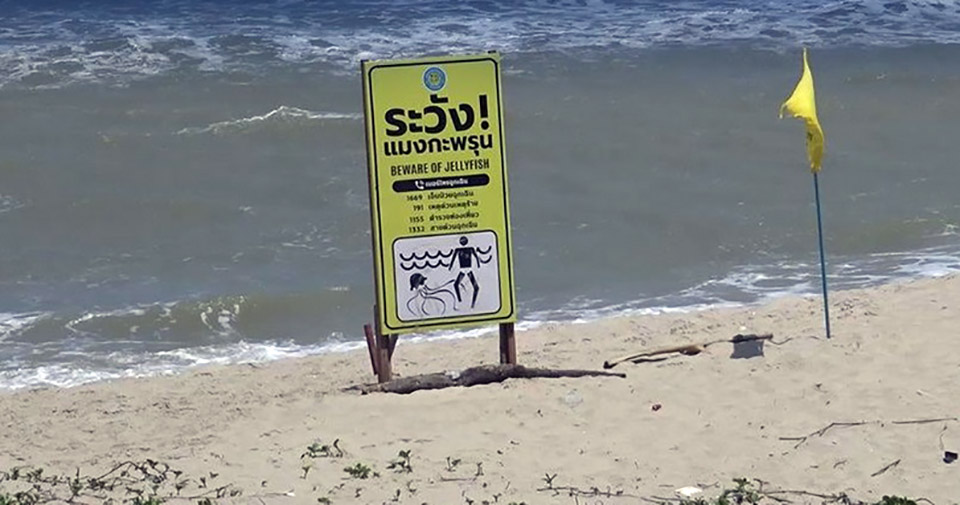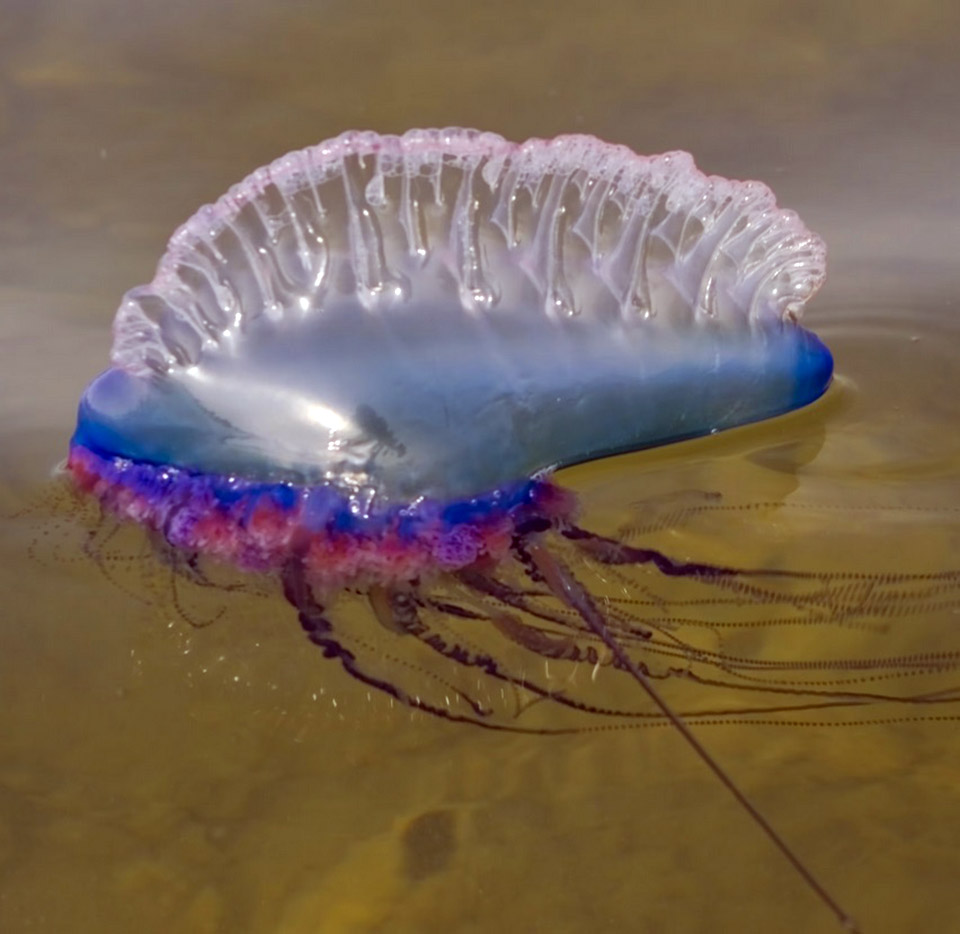
Tourist advisories are in effect along Chala That Beach in Songkhla province due to recent sightings of the dangerous Portuguese man-of-war. The jellyfish-like creatures have been spotted from Singha Nakhon district to the capital district, leading to several tourists being stung.
Recognized as one of the most venomous marine species, the Portuguese man-of-war can cause severe injuries and potentially fatal reactions.
In response to the threat, Songkhla City’s Mayor Wanchai Parinyasiri has directed lifeguards to caution beachgoers and ensure first aid kits are readily available. Immediate hospitalization is recommended for those who are stung. The mayor has also recommended avoiding the beach temporarily, anticipating that the creatures will linger in the area until early April.
The Portuguese man-of-war, a siphonophore, is distinguished by its balloon-like float, which can be blue, violet, or pink, extending up to 15 centimeters above the water’s surface. These marine drifters, found in the Atlantic, Indian, and Pacific oceans, sometimes wash ashore in Thailand’s southern provinces during the monsoon season. Their stings can disrupt the nervous system and heart, leading to intense pain and even death. Beachgoers are strongly advised against touching them. (NNT)









